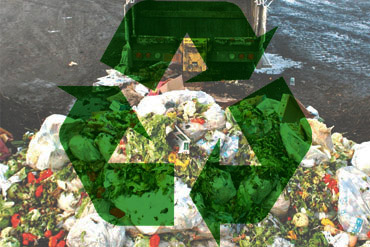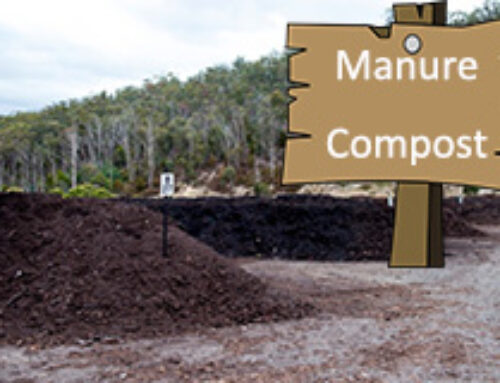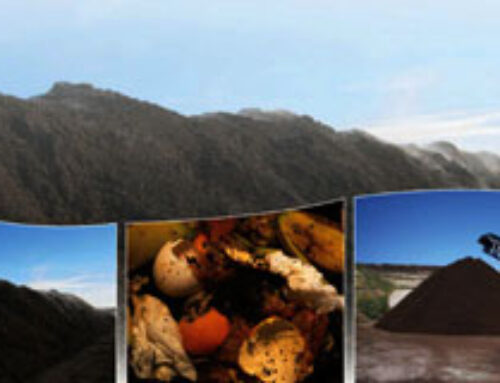Food Waste Loss and Disposal Introduction
In all municipal solid waste, food waste accounts for a large part of landfill disposal, which is about 20-30%. Most food waste is collected from institutions and communities, like restaurants, wet markets, hotels, schools, food production areas, etc. According to statistics, about one-third of food for human daily life is lost or discarded, about 1.3 billion tons. In the UK, about 20-40% of fruit and vegetables are discarded directly because they do not meet the standards of selling. In North America, half of fish and seafood is wasted. About 88 million tonnes of food are wasted per year in the EU, which is equal to 143 billion euros(FUSIONS, 2016). What’s worse, more than 40% of food loss in developing countries, occurs at the harvest and processing step or retail step.

Feasibility of Using Food Waste to Make Organic Fertilizers
Food waste contains high organic matter. From the chemical composition, there are carbohydrates, cellulose, protein, oil, and inorganic salts, of which organic components are the main parts. In the meantime, it contains a certain amount of calcium, phosphorus, potassium, iron, and other trace elements. The content of each component in the food waste (dry matter): crude protein accounted for 15% to 23%, fat 17% to 24%, ash 3% to 6%, Ca element 54%, P element 43%, and NaCl 3% to 4%.
Food waste has high water content, the proportion of organic matter, and salt content. In addition, it contains fewer harmful substances and is easy to degrade. Its composition and nature are unstable and are subject to a variety of factors. Different factors have different effects on the composition, nature, and production of food. The biodegradability of food waste is as high as 82% and is suitable for treatment with a variety of bio-transformation techniques.

|
Food Waste Type |
|
| Vegetables | Onion / celery and other rhizomes, pepper / pepper head, onion / garlic / ginger / corn shell,nonstandard-selling vegetables in supermarket, leftovers in kitchen |
| Fruit | Walnut / chestnut / peanut / pineapple and other hard shell, peach / apricot / persimmon nucleus |
| Seafood | Shellfish / snail / abalone / oysters and other shellfish category, shrimp / crab and other crustacean fish bone |
| Meat | Pig / cow / chicken and other livestock hair and bones |
| Eggs | Eggs / duck eggs / quail eggs / ostrich eggs and other eggshell |
| Dairy products | Milk,cheese and yogurt |
| Leftovers | Noodles, rice, beans, cereals, bread |
| Other | Gluten all kinds of tea residue, Chinese medicine slag,oil |
From the table, we can see that it has many types of food waste. Yes, we can use them to make organic fertilizer pellets and granules. Before dealing with food waste, we should be in pretreatment. That is to say, separating and dehydrating food waste are the first steps for whole food waste organic fertilizer production. Let’s make a detailed analysis of the organic fertilizer production process one by one.
1. Separation and dehydration
Food wastewater content is more than 80%. When we make organic fertilizer, the water content should be less than 60%. We can use solid-liquid separation machines to separate food waste. The non-clogged cutting pumps can send food waste to the separation machine. Through screw extrusion, the water in food waste can be squeezed. Separated liquid from the machine below the liquid discharge port can be directly transported to the biogas, vegetable greenhouses, orchards, and other fields that need fertilization. Separated dry matter can be used to produce organic fertilizer.
2. Composting and fermentation
You can add some animal manure, crop straw, or mushroom residue to food waste. And microbial agent is necessary for the composting process. After making sure the organic materials for organic fertilizer production, you can put piles. The materials should be evenly stacked. The bottom of the pile is some dry materials, such as mushroom residue, straw, sawdust, etc. In the middle of the pile, you can put food waste or animal manure. And on the top of the pile, you can add some dry materials as well. The length of the pile is not limited. Its width is about 2 meters, height is 1 meter.
After putting the pile, you need to turn and mix the compost in time. Generally speaking, it takes several months for the whole fermentation. Apparently, it is not suitable for commercial organic fertilizer production. A compost-turner machine may be a great choice. With the help of the machine, the whole food waste fermentation period is about 7-15 days. You can turn the pile once a day. In addition, there are several factors that affect your composting quality, such as water content, temperature, C/N ratio, oxygen and ventilation supply, pH, etc. Every factor should be strictly controlled. When the compost is decomposing, it can be in the next step. The decomposing standard is that organic materials are nearly rotten and black.
3. Crushing
After composting, all organic materials need to be crushed. You can use high moisture crushing machine for fertilizer materials to crush your food waste materials. Because the organic materials’ water content is about 25-35% and the size is a little big for granulation, it needs to be crushed into smaller materials.
4. Mixing
After crushing food waste material, all organic matter should be mixed in a horizontal fertilizer mixer. Using a new type of rotor structure, the horizontal fertilizer mixer makes food waste materials fully mixed. The gap, between the rotor and the bright body, can be adjusted to close to zero, effectively reducing the amount of material residue.
5. Granulation
Granulation is one of the important steps for organic fertilizer production. Food waste organic materials should be granulated into pellets or granules. The materials contain high water content, it is suitable for wet-type organic fertilizer granulation. Choosing a high granulation rate granulator is necessary. We suggest you use a new type organic fertilizer granulator to make organic fertilizer granules.
6. Drying
After granulation, organic fertilizer granules can be sent to a rotary drum dryer. The organic pellets need to reduce the water content to be suitable for storage. The water content in food waste organic fertilizer pellets can reduce to 13% and realizes the deodorization function.
7. Cooling
This step should be working together with organic fertilizer drying. It is used to cool food waste organic fertilizer granules, which reduces water content further.
9. Screening
Organic fertilizer granules have different types and sizes, so they need to be screened. And then it can separate the finished product and return the product. Rotary drum fertilizer screener can be used in this step.
10. Packaging
The last step in organic fertilizer production is packing. Using an automatic packaging machine to pack food waste organic fertilizer pellets.
Making Food Waste Organic Fertilizer Advantages
1. It solves the environmental pollution problem. Food waste contains high water and organic matter. In addition, it contains a variety of unsaturated fatty acids. The matters are easy to decompose. Making organic fertilizer pellets can fully reuse these organic materials and reduce pollution.
2. It helps make benefits using waste. Making organic fertilizer granules and selling fertilizer can add some income. What’s more, it reduces treatment costs for landfill.
3. It removes health hazards. Food waste is easy to grow bacteria. Untreated food waste may contain foot-and-mouth disease pathogens, African swine fever, and other harmful bacteria. Making organic fertilizer pellets can reduce health problems.
4. It fully uses organic materials and realizes materials recycling. Landfill treatment is not suitable for the current condition. To make food waste organic fertilizer is a sustainable method for waste treatment.





